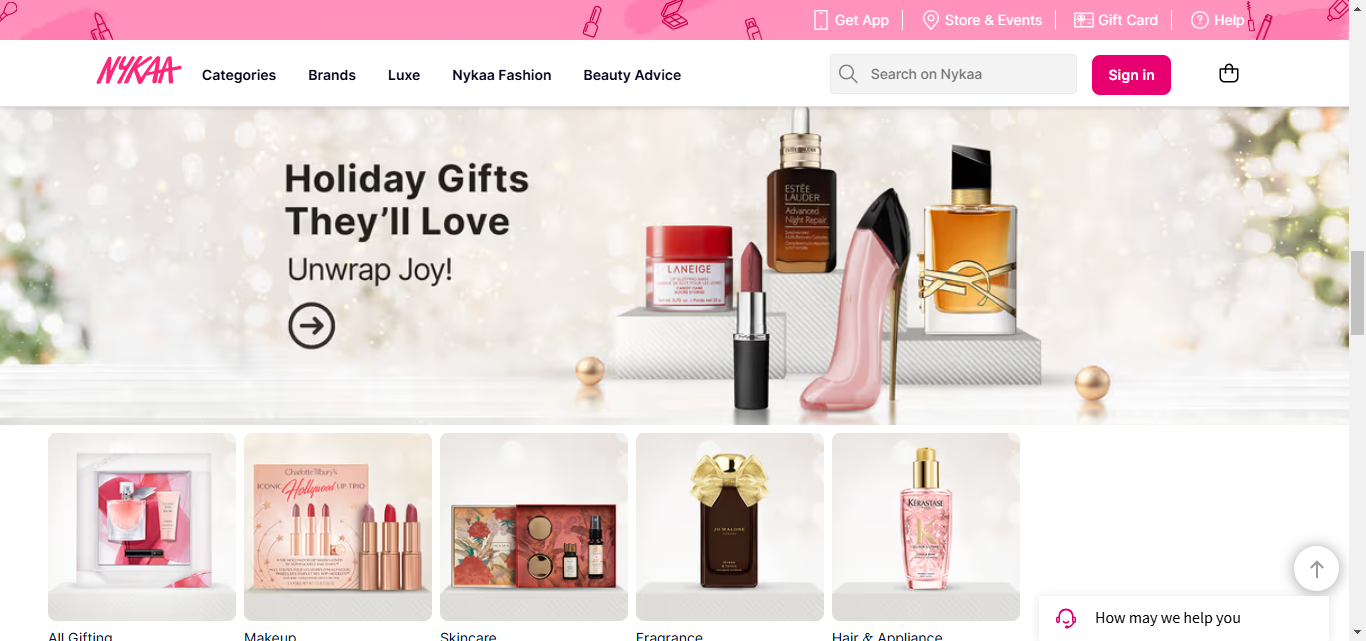Introduction
Nykaa, founded by Falguni Nayar in 2012, has transformed the beauty and fashion e-commerce landscape in India. Evolving from an online beauty retailer to a comprehensive omnichannel platform, Nykaa offers a diverse range of products, including cosmetics, skincare, wellness items, and fashion apparel. Its success is attributed to a robust business model, strategic brand partnerships, and a user-centric digital experience.
If you’re considering launching a website like Nykaa, this guide provides a comprehensive roadmap, covering business modeling, feature planning, technology stack selection, cost estimation, and marketing strategies.
1. Understanding Nykaa’s Business Model
Nykaa-like app development operates on a hybrid model that combines inventory-based and marketplace approaches:
- Inventory-Based Model: Nykaa procures products directly from manufacturers, stores them in its warehouses, and sells them to customers. This model ensures product authenticity and quality control.
- Marketplace Model: Nykaa also allows third-party sellers to list their products on its platform, expanding its product range without holding inventory.
This dual approach enables Nykaa to offer a vast selection of products while maintaining control over key offerings.

2. Steps to Start a Business Like Nykaa
a. Market Research and Niche Selection
- Identify Target Audience: Understand the demographics, preferences, and purchasing behaviors of your potential customers.
- Analyze Competitors: Study existing players in the beauty and fashion e-commerce space to identify gaps and opportunities.
- Select Product Categories: Decide whether to focus on beauty products, fashion apparel, wellness items, or a combination thereof.
b. Business Planning
- Define Value Proposition: Articulate what sets your platform apart—be it exclusive brands, pricing strategies, or customer experience.
- Revenue Model: Determine how the business will generate income, such as through product sales, commissions, or subscription services.
- Legal and Compliance: Register your business, obtain necessary licenses, and ensure compliance with e-commerce regulations.
c. Building the Platform
- Choose Development Approach: Decide between custom development, using e-commerce platforms like Shopify, or leveraging white-label solutions.
- Design User Interface (UI) and User Experience (UX): Create an intuitive and appealing design that facilitates easy navigation and shopping.
- Develop Core Features: Implement essential functionalities such as product listings, search filters, shopping cart, payment gateway integration, and user accounts.
d. Vendor and Product Onboarding
- Partner with Brands: Establish relationships with beauty and fashion brands to offer a diverse product range.
- Set Quality Standards: Ensure that all products meet quality and authenticity criteria to build customer trust.
e. Logistics and Fulfillment
- Warehouse Management: If adopting an inventory model, set up warehouses to store products efficiently.
- Shipping Partnerships: Collaborate with reliable logistics providers to ensure timely and safe delivery of products.
- Return and Refund Policies: Develop clear policies to handle returns and refunds, enhancing customer satisfaction.
f. Marketing and Customer Acquisition
- Digital Marketing: Utilize SEO, social media marketing, email campaigns, and influencer partnerships to reach your target audience.
- Promotions and Discounts: Offer introductory deals, loyalty programs, and seasonal discounts to attract and retain customers.
- Customer Engagement: Implement features like reviews, ratings, and personalized recommendations to enhance user engagement.
3. Essential Features for a Nykaa-Like Platform
a. User Panel
- User Registration and Profiles: Allow users to create accounts and manage their profiles.
- Product Browsing and Search: Implement advanced search filters and categories for easy product discovery.
- Shopping Cart and Checkout: Provide a seamless process for adding products to the cart and completing purchases.
- Order Tracking: Enable users to track their orders in real-time.
- Reviews and Ratings: Allow customers to leave feedback on products.
b. Vendor Panel
- Vendor Registration: Facilitate onboarding of third-party sellers.
- Product Management: Enable vendors to add, update, and manage their product listings.
- Order Management: Provide tools for vendors to process and fulfill orders.
- Sales Analytics: Offer insights into sales performance and customer behavior.
c. Admin Panel
- Dashboard: Monitor overall platform performance, including sales, user activity, and inventory.
- User and Vendor Management: Manage user accounts and vendor partnerships.
- Content Management: Update banners, promotions, and informational pages.
- Reports and Analytics: Generate reports to inform business decisions.
4. Technology Stack Recommendations
- Frontend Development: React.js, Angular, or Vue.js for responsive and dynamic user interfaces.
- Backend Development: Node.js, Django (Python), or Laravel (PHP) for robust server-side operations.
- Database: MongoDB, PostgreSQL, or MySQL for efficient data management.
- Mobile App Development: React Native or Flutter for cross-platform mobile applications.
- Payment Gateway Integration: Razorpay, Paytm, or Stripe for secure and diverse payment options.
- Cloud Hosting: AWS, Google Cloud, or Microsoft Azure for scalable and reliable hosting solutions.
5. Cost Estimation
The cost to develop an app like Nykaa platform varies based on features, technology stack, and development team location.
- Basic MVP (Minimum Viable Product): $25,000 – $35,000
- Mid-Level Platform: $35,000 – $45,000
- Advanced Platform with Comprehensive Features: $45,000 – $90,000
These estimates include design, development, testing, and deployment. Ongoing costs such as marketing, maintenance, and updates should also be considered.
6. Timeline for Development
- Planning and Research: 2–3 weeks
- Design and Prototyping: 3–4 weeks
- Development: 8–12 weeks
- Testing and QA: 2–3 weeks
- Deployment and Launch: 1–2 weeks
Total estimated time: 4–6 months
7. Marketing Strategies
- Influencer Collaborations: Partner with beauty and fashion influencers to promote your platform.
- Content Marketing: Create blogs, tutorials, and videos to educate and engage your audience.
- Social Media Campaigns: Leverage platforms like Instagram, Facebook, and YouTube for brand awareness.
- Email Marketing: Send personalized offers and updates to your subscriber list.
- Search Engine Optimization (SEO): Optimize your website and content to rank higher in search engine results.
Conclusion
Starting a Nykaa like marketplace app development involves meticulous planning, strategic partnerships, and a customer-centric approach. By understanding the market, leveraging the right technology, and implementing effective marketing strategies, you can build a successful beauty and fashion e-commerce platform.

